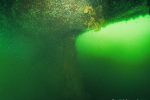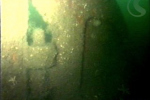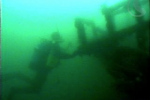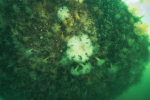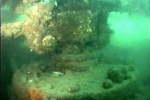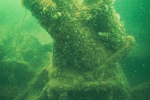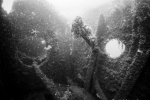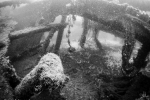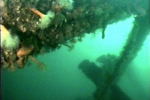The Breda was built as the steam yacht Sapphire by John Brown’s yard in Clydebank (Yard No 411) for the Duke of Bedford and was a magnificent vessel as can be seen from the photograph. Built in steel and launched on 7th March 1912 she measured 285.0′ x 35.2′ x 14.0′ and her tonnage was 1207 gross tons, 546 net tons. She was powered by twin compound steam engines by John Brown delivering 329 nominal horse power. Manned by a crew of forty-nine and she had every comfort imaginable for her rich owner to enjoy. She was mainly used by the Duchess of Bedford on ornithological trips round the Hebrides, Orkney and Shetland. During the First World War the Sapphire, like many of her luxurious counterparts, was requisitioned for war service and, after being fitted with one four inch gun and a twelve pounder, she served out the war as an auxiliary patrol vessel. Unlike many of the other steam yachts forced into national service, she survived the First World War and was returned to her owner and to her normal use as a private yacht.
At the beginning of the Second World War she requisitioned once more. This time she was given a new name – HMS Breda – and was fitted out for use as a submarine tender.
She operated safely through the first years of the war but, on the night of the 17/18th February 1944, she was in collision with HM submarine Proteus and badly damaged. Barely afloat with a large hole in her hull she was brought to Campbeltown on February 18th and beached on the south side of the loch.
Later that same day she was re-floated to be to taken for repair but she immediately filled with water and sank again, this time in deeper water. Initially it was expected that she would be raised, but a report in Lloyd’s records on 2nd April states that, on that date, salvage operations were to be discontinued.
The wreck of HMS Breda lies in position 55°24.908’N, 005°35.040’W, about 400 metres from the south shore of Campbeltown Loch. The bow of the vessel points directly towards the shore and lies in around 9 metres. The wreck lies down a gentle, muddy slope reaching 14 metres under the stern. Forward of midships the wreck is a mass of tangled metal, the result of the initial plunge to the seabed and subsequent efforts to salvage the large quantities of non ferrous metal that are used to fit out these beautiful yachts. However, the dramatically undercut stern is still almost intact and provides the most impressive and interesting area of the wreck.
Conditions for diving the wreck are generally good as she lies in a sheltered location and is not affected by tides. Indeed the very lack of movement in the water, combined with the deep mud of the seabed and the silt that covers the wreck, are the only drawback as the visibility, which can be good at the start of an exploration, quickly reduces as the seabed is stirred up by passing fins. It is possible to dive this wreck from the shore by swimming out on the transit shown, then following the contour of the seabed at 12 metres until you reach the wreck.





